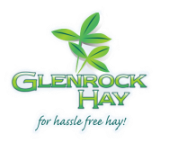When a horse is doing muscular work, its main requirement is a liberal supply of energy. Mineral and vitamin requirements for a working horse, however, are not much more than those required by an idle horse. It should be noted, however, that brood mares require a good supply of protein, minerals and vitamins during pregnancy, and these requirements will increase even further while nursing foals.
For most horses in Queensland, pastures provide the main feed source, but when pastures are mature they often fall short of the horses normal requirements. If pasture is in an advanced state of maturity (flowering-seeding) or is insufficient, it may be necessary to introduce supplementary feeding or complete hand feeding.
Foodstuffs used for feeding horses fall into two classifications:
Concentrates—foods high in nutritive values but low in fibre contents; and
Roughages—foods high in fibre content but lower in nutritive value.
Knowing what and how much to feed your horse is dependant on three factors;
(I) the quantity and quality of pasture available;
(II) the amount of work the horse is performing; and
(III) the body condition of the horse.
Legume hay is undoubtedly the best hay from a nutritional point of view and well-cured grassy lucerne hay is good, palatable roughage for horses.
When undertaking full hand-feeding of horses the following tables may be used as a guide for the rates of roughage to concentrates.
A good guide as to whether your horse is getting sufficient feed is to check their body condition.
Source:
Beeftalk No. 10 Spring—Summer 2000
Foodstuffs used for feeding horses fall into two classifications:
Concentrates—foods high in nutritive values but low in fibre contents; and
Roughages—foods high in fibre content but lower in nutritive value.
Knowing what and how much to feed your horse is dependant on three factors;
(I) the quantity and quality of pasture available;
(II) the amount of work the horse is performing; and
(III) the body condition of the horse.
Legume hay is undoubtedly the best hay from a nutritional point of view and well-cured grassy lucerne hay is good, palatable roughage for horses.
When undertaking full hand-feeding of horses the following tables may be used as a guide for the rates of roughage to concentrates.
A good guide as to whether your horse is getting sufficient feed is to check their body condition.
Source:
Beeftalk No. 10 Spring—Summer 2000

 RSS Feed
RSS Feed
